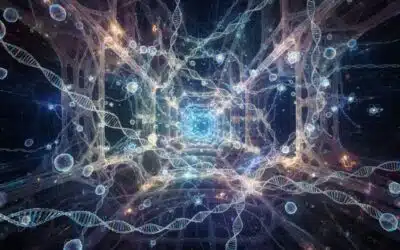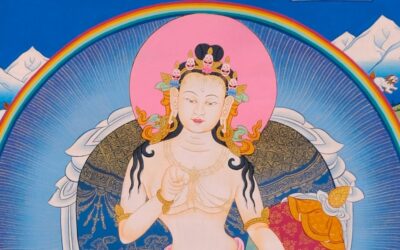Impermanence, Inconstancy and Integration

Written By Damien Brohon
Blog | The Dzogchen basics | The Dzogchen Journey
In “Impermanence, Inconstancy and Integration” Damien talks about how impermanence leads us to the immutable.
Series: How to practice the Dzogchen path?
Impermanence, Inconstancy and Integration
It was so real, and it vanished like a mirage.
What?
The house near my old school, that I’ve known forever, was destroyed. What I believed in so strongly ten years ago. Yesterday. Last night’s dreams, so intense but completely forgotten. The sky of an hour ago – bright and now very dark. The thought of a minute ago (what was it again?). All of this is like a mirage appearing, of course, but devoid of reality.
The moments when we become aware of impermanence lay the foundation of our spiritual path in a gradual approach (common to Buddhism) to Dzogchen. They are indeed moments of truth. It’s not just the house or the sky that changes, but all things and all beings. It is only we who become aware of it at a specific moment because – for some mysterious reason – this omnipresent reality has come to affect us personally.
“Every moment of distraction is an opportunity to return to the contemplation of the mind’s essence. Everything is clear, vivid, and fresh.”
The lives of the masters are imbued with the awareness of the ephemeral and uncertain nature of existence. Without this, we become trapped in denial and invent entities with a false permanence. We identify with the image of a substantial “I” that remains identical to itself despite all the changes and all the constant proofs of its insubstantiality. We invent a world with stable and definitive properties that must always to be reinvented because it is fundamentally unstable. In short, “Deceived by all sorts of appearances, like the reflection of the moon on the water, sentient beings wander along the chain of samsāric existence.” [1] At times like those mentioned above, in practice or when receiving teachings, all this is self-evident. It is the very motivation of a path dedicated to the awakening of beings (oneself being part of them) so that they can “(…) remain spontaneously in the luminosity of primordial evidence (…).” [2]
In this perspective, every change is a reminder of the View, that is to say the vision of the nature of reality. It also happens that we forget all of this, even after we have become acutely aware of it. This distraction leads us back to our fictitious constructions and thus to wandering, because they do not correspond to anything real. Such is the inconstancy of a mind that has not yet fully stabilized the recognition of its own nature: its access to it is impermanent, so strong is the weight of karmic tendencies. Such is the infinite creativity of the mind which can both recognize its nature and lose sight of it : “Vast matrix space self-appeared, inexpressible, Where there is no notion of cyclic wandering or its afterlife. When it is known, it is the fullness of pure Enlightenment, When it is not known, it is wandering in the cycle of ordinary being.” [3]
It is therefore either a perpetual movement because it is restless, that is to say, never finding the peace that it is seeking; or the fourth time – beyond time. Hence the need for a reminder. Hence the urgency of returning to that which has never left us.
The Dzogchen tradition speaks of this process in terms of the mind’s power of manifestation (rtsal), which radiates (rol) in the form of the diverse, shimmering, and elusive phenomena of our experience (rgyan). For a Dzogchen practitioner who has learned to recognize them directly, these ornaments are the very expression of the unchanging nature of mind. The diversity of this manifestation is no longer a source of confusion, for the source is recognized as being always the same. This is integration in the deepest sense. Every moment of distraction is an opportunity to return to the contemplation of the essence of mind. Everything is clear, vivid, and fresh. Every second is an eternal present – timeless. Thus, impermanence and even inconstancy lead us to realize the unchanging nature of mind.
[1] Excerpts from the Prayers of the Preliminary Practices of Longchen Nyingthig, trans. Lama Pemo Tsultrim, Lama Kunsang Dorje, and Mila Khyentse Rinpoche. BACK
[2] Ibid. BACK
[3] The All-Excellent’s Mighty Path of Aspiration, trans. Dzogchen Today! Translation Committee. BACK
More Posts
The ground of all Künshi
This article “The ground of all, Künshi” provide a better understanding of the essential words and concepts of Dzogchen.
The Four Testaments of the Vidyādharas
This article from Grégoire presents the" Four Testaments of the Vidyādharas", essential teachings from the early masters of Dzogchen.
The Story of the First Masters: Garab Dorje
“The Story of the First Masters: Garab Dorje” is the first article in a new category about the masters of the Dzogchen lineage.





